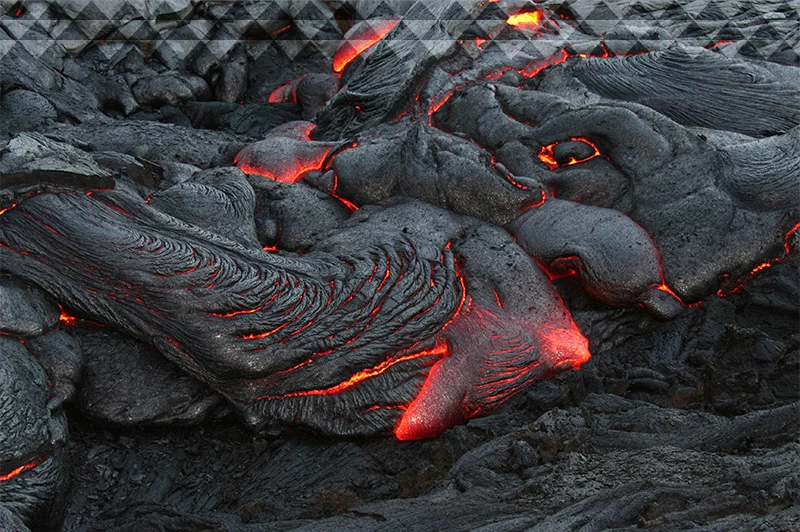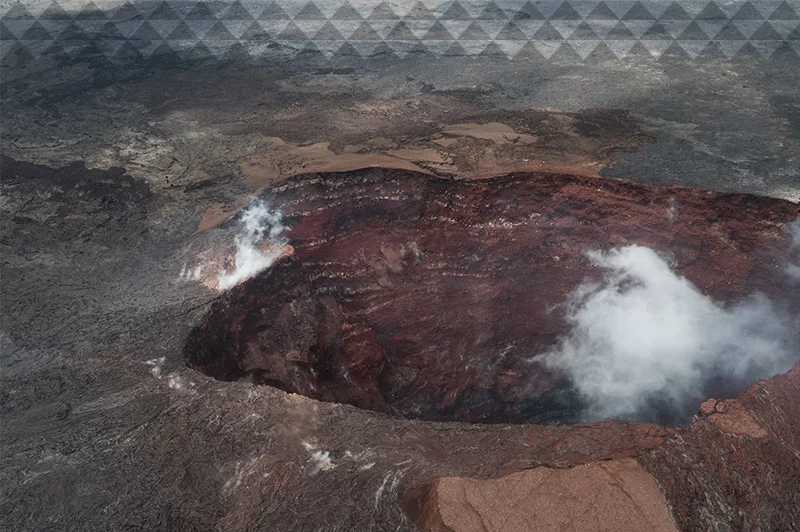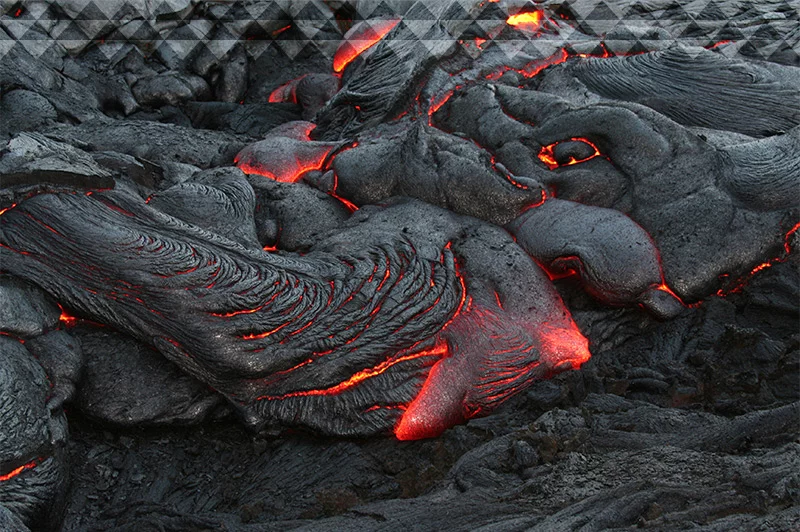The Most Active Volcanoes in Hawaii

How Many Active Volcanoes Are in Hawaii?
Hawaii has five main volcanoes that are considered active. Four of these active volcanoes are located on Big Island. They include Kilauea, Mauna Loa, Mauna Kea, and Hualalai. The other is located on Maui and it is Mount Haleakala. There is also a sixth active volcano, called Loihi, that is still submerged under water off of the coast of Big Island near Kilauea. 
Kilauea
Kilauea on Big Island is the most active volcano on Hawaii and is also considered one of the world’s most active volcanoes.As part of the larger Hawaiian hotspot, Kīlauea has been erupting almost continuously for decades, with its most notable eruption beginning in 1983 and lasting until 2018. This eruption dramatically reshaped the island, creating new land and altering landscapes as lava flows reached the ocean. The 2018 eruption was particularly intense, destroying homes and roads while forming a massive lava delta along the coast. Despite its destructive power, Kīlauea is also a source of cultural significance to Native Hawaiians, who regard it as the home of Pele, the goddess of fire and volcanoes
Today, Kīlauea remains an active and closely monitored volcano within Hawai‘i Volcanoes National Park. Visitors can witness its dynamic activity from safe viewing areas, seeing glowing lava within its crater or steam rising from its vents. Scientists continue to study the volcano’s behavior, as periodic eruptions remind residents and visitors alike of the island’s ever-changing landscape.
Mauna Loa
Mauna Loa, the largest volcano on Earth by volume, towers over the other volcanoes on the Big Island, covering over half the island’s landmass. Unlike its highly active neighbor, Kīlauea, Mauna Loa experiences less frequent but massive eruptions, with its most recent occurring in November 2022. This eruption, though short-lived, sent lava flows cascading down its flanks, reminding residents of its potential for widespread impact. As a shield volcano, Mauna Loa’s eruptions are typically characterized by fast-moving lava rather than explosive activity, but its sheer size and elevation—towering over 13,000 feet above sea level—make it a geological giant with global significance.
In Hawaii, this active volcano is not just a force of nature; it also holds cultural and scientific importance. Native Hawaiians consider it a sacred place, deeply tied to traditional beliefs and legends. Additionally, the volcano is home to the Mauna Loa Observatory, a critical research station for monitoring atmospheric carbon dioxide levels and studying climate change. Within Hawai‘i Volcanoes National Park, visitors can explore its vast lava fields, summit trails, and breathtaking landscapes, gaining a deeper appreciation for the island’s volcanic origins.
Mauna Kea
Mauna Kea, the tallest mountain in the world when measured from its base on the ocean floor, rises over 33,500 feet from the seafloor and stands at 13,803 feet above sea level. Unlike its neighboring volcanoes, its last eruption occurred between 6,000 to 4,500 years ago. This towering peak is vastly different from the lava-covered landscapes of Kilauea and Mauna Loa, as its high elevation supports alpine conditions, even receiving snowfall during the winter months. The summit is a place of stark beauty, featuring rocky terrain, cinder cones, and breathtaking panoramic views above the clouds.
Beyond its geological significance, this active volcano in Hawaii holds deep cultural and scientific importance. To Native Hawaiians, it is a sacred place, regarded as the realm of the gods and an essential part of their spiritual and ancestral traditions. At the same time, its summit is home to some of the world’s most advanced astronomical observatories, taking advantage of the mountain’s clear, high-altitude skies for groundbreaking space research. This intersection of culture and science has sparked ongoing discussions about land use and preservation, making Mauna Kea not only a geological wonder but also a focal point of cultural and environmental stewardship in Hawaii. 
Hualālai
Hualālai, the third-youngest and third-most active volcano on Big Island, rises over 8,200 feet above sea level on Hawaii’s western coast. Though not as frequently eruptive as Kīlauea or Mauna Loa, Hualālai is still considered an active volcano. Lava flow in Hawaii Hualalai last erupted in 1801 but it has had other rumblings since that last eruption on Big Island. There were many a lot of earthquakes caused by magma movement within the volcano during the 1920s. This volcano has been under a close watch since the 1980s and hasn’t had any earthquakes or microearthquakes since then but it is still considered an active volcano.
Hualālai’s rugged terrain, made up of weathered lava flows and cinder cones, contrasts with the lush resorts and coffee farms that now thrive on its lower slopes. The region is famous for its rich volcanic soil, which helps produce the world-renowned Kona coffee. Visitors can explore the mountain’s slopes through hiking trails, lava tubes, and preserved petroglyphs, experiencing the deep connection between Hawaii’s volcanic landscape and its cultural heritage.
Haleakala
Haleakala, meaning “House of the Sun” in Hawaiian, is a massive shield volcano that dominates the island of Maui. Rising 10,023 feet above sea level, it is best known for its vast summit crater, which stretches over seven miles wide and features otherworldly cinder cones and rugged lava formations. Haleakala hasn’t erupted since the 17th century but it is still considered active. This popular volcano is located on Maui. Scientists believe that future eruptions should be expected but they aren’t seeing any signs that it will happen any time soon.
Haleakala is a place of deep cultural and ecological significance. According to Hawaiian legend, the demigod Maui lassoed the sun from its summit to slow its journey across the sky, bringing longer daylight to the islands. Today, Haleakala National Park protects the volcano’s unique ecosystems, which include rare plants and endangered species found nowhere else in the world.
Loihi
Loihi is the youngest of the active Hawaiian volcanoes and it is not very well known yet. At this time it is still submerged under sea level off the shore of Big Island but it is currently erupting underwater. As the volcano continues to erupt and build on itself, it could eventually expand the land area of Big Island or even establish itself as another island in the Hawaiian island chain.
Despite being out of sight, Lō‘ihi’s hydrothermal vents support unique deep-sea ecosystems, including heat-loving bacteria and other marine life adapted to extreme environments. Scientists closely monitor Lō‘ihi to better understand how volcanic islands form, providing insight into Hawaii’s geological future. Though it may take millennia before Lō‘ihi rises above the waves, it serves as a reminder that the Hawaiian Islands are still evolving, shaped by the same powerful forces that created them.. 